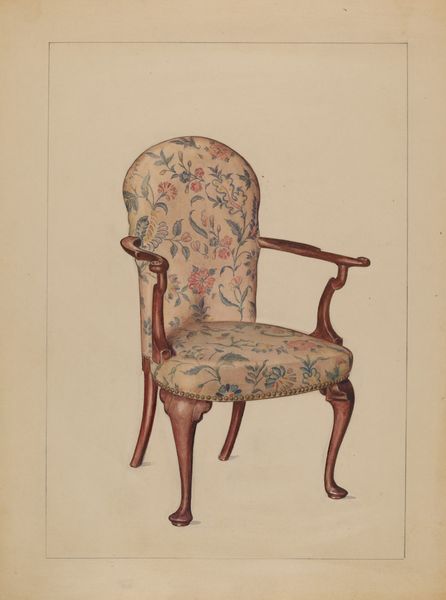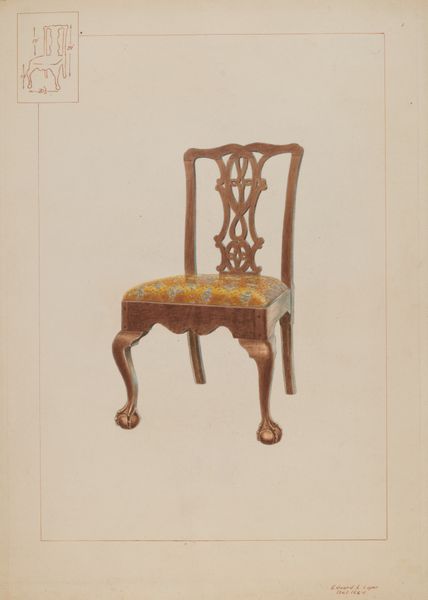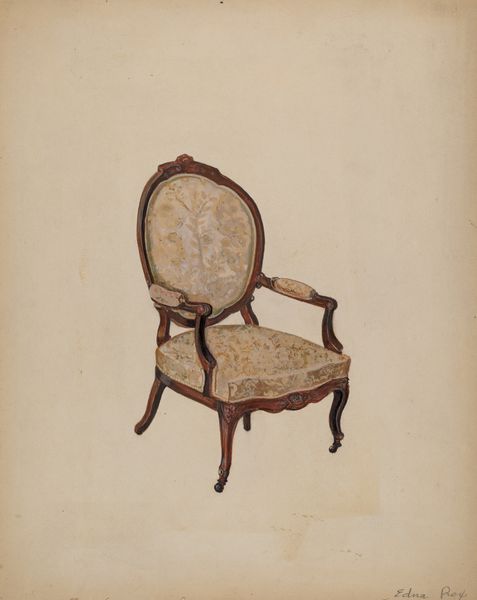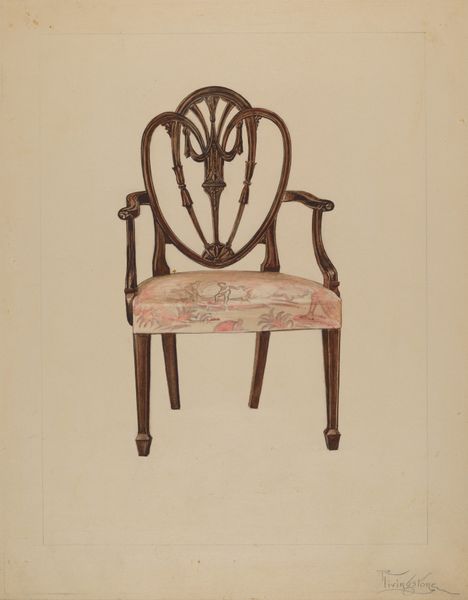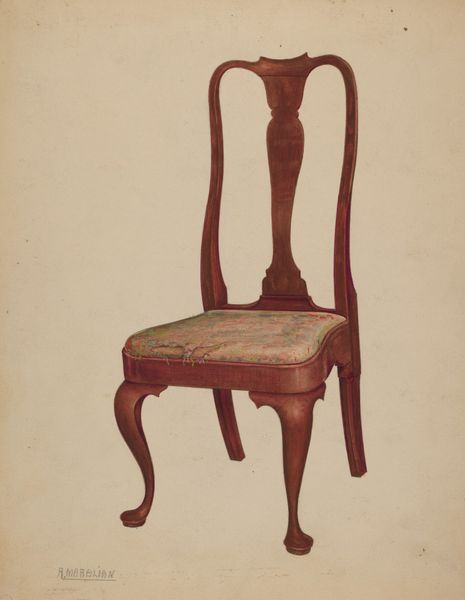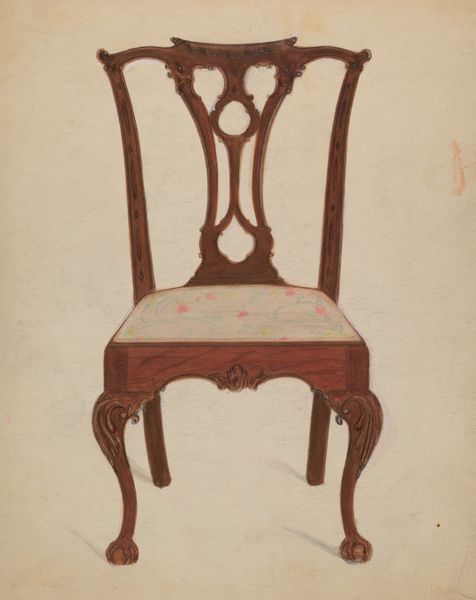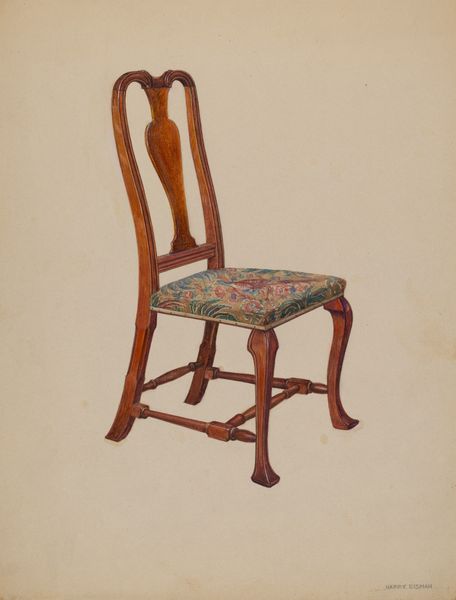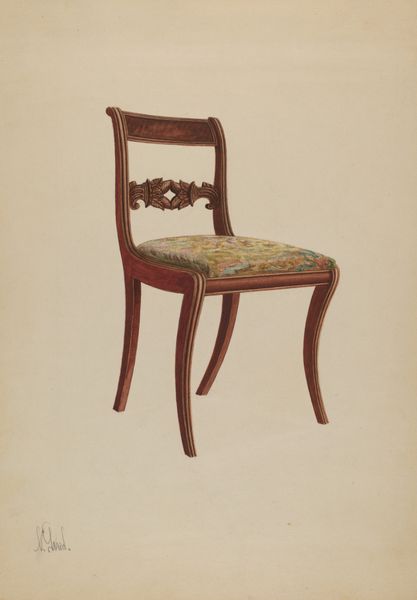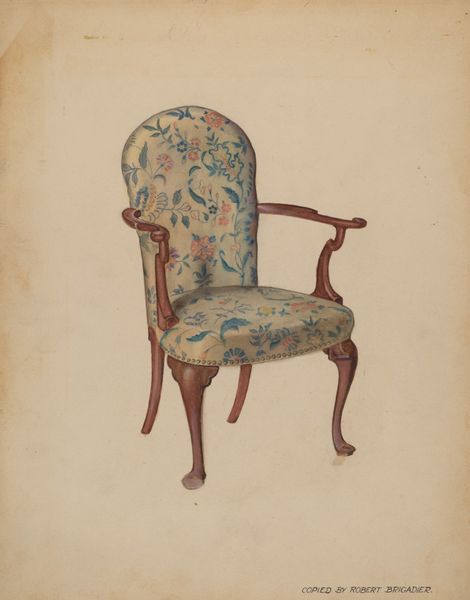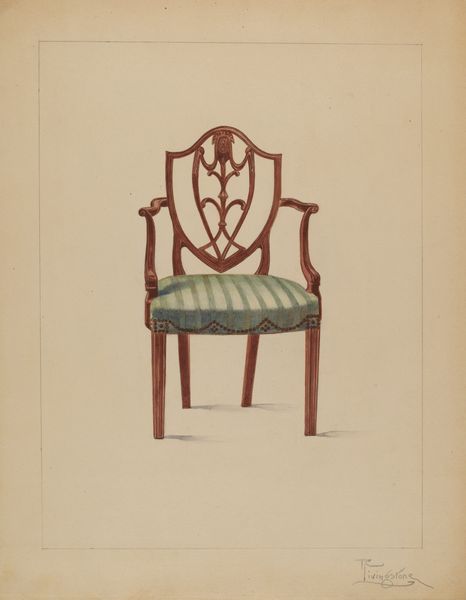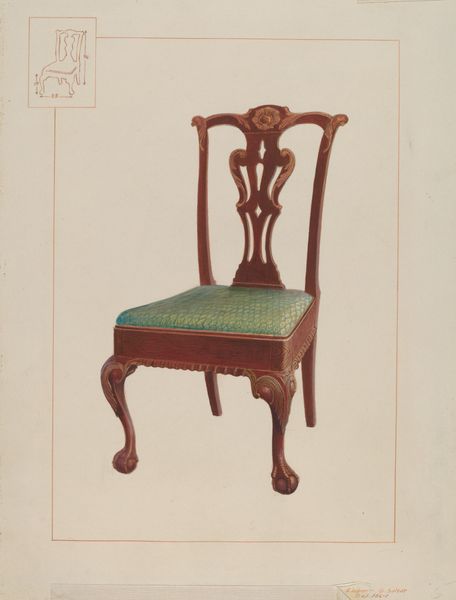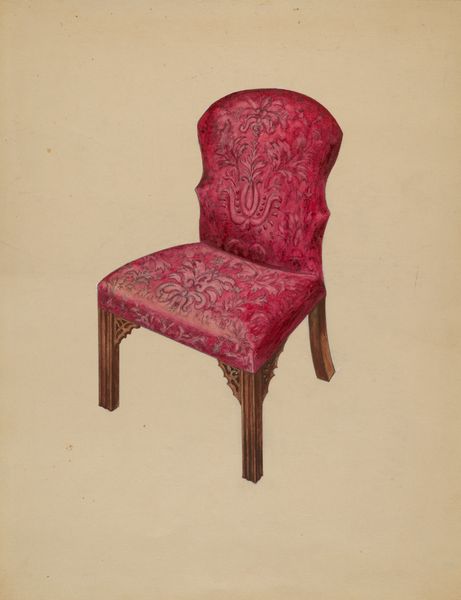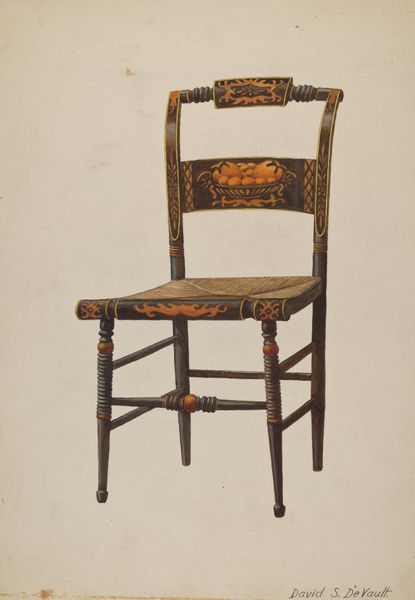
drawing, watercolor
#
drawing
#
watercolor
#
watercolor
Dimensions: overall: 35.5 x 24.1 cm (14 x 9 1/2 in.) Original IAD Object: 32"high, height of seat, 18", 16"wide
Copyright: National Gallery of Art: CC0 1.0
Curator: Here we have a watercolor drawing from around 1936 entitled, simply, "Chair." Editor: It feels like an artifact of studied refinement, but simultaneously quite ephemeral, wouldn't you agree? The light washes of color lend an air of delicate transience. Curator: Precisely. Observe how the artist masterfully employs layering of watercolors to build form, imbuing a sense of volume to an object seemingly rendered for representational purposes alone. The curvilinear construction of the chair—the cabriole legs, the serpentine back—it all contributes to a flowing visual rhythm. Editor: Do you believe, given the timing, that there might be something in its intention that's socio-economic? I find the detailed seat fabric oddly unsettling against the muted, almost skeletal framework, like the artist attempts a statement of social tensions around domestic comfort during the pre-war period. The delicate, slightly faded coloring suggests a premonition of hard times. Curator: I would posit instead that the palette speaks more directly to inter-war design trends, an evolution, shall we say, from earlier art deco sensibilities towards more simplified modes of representation. Notice, furthermore, the stark absence of detail in the negative space; our attention is meant to be acutely focused on the object itself. Editor: Fair enough. Still, such detailed renderings were often commissioned pieces. I can't help wonder, where would a patron situate such a fanciful design? Surely it makes more sense as a signifier for some aspiration that many could not reach in the given context? Curator: Well, without knowing precisely what Marcus Moran's motives might have been, it's difficult to claim historical context without contextual documentation to prove that this piece could carry social, ideological content from a potential patron of his. Nevertheless, this exercise has helped unveil subtle elements in our understanding of this relatively simple work, at a time of relative simplicity as well. Editor: A stimulating exchange, indeed. Considering the intricacies in an ostensibly simple composition enriches the art historical canon overall.
Comments
No comments
Be the first to comment and join the conversation on the ultimate creative platform.
